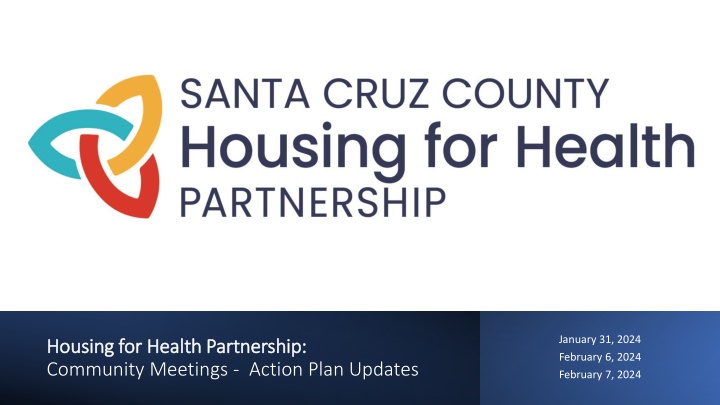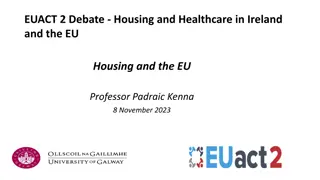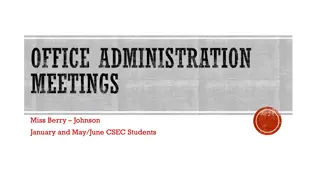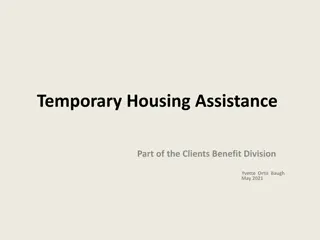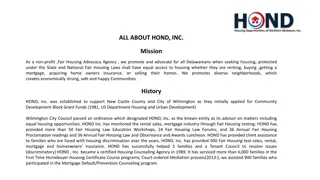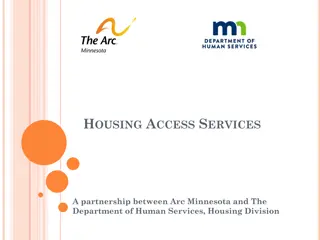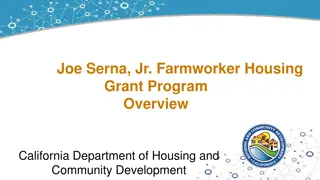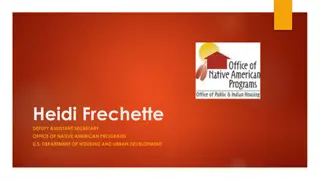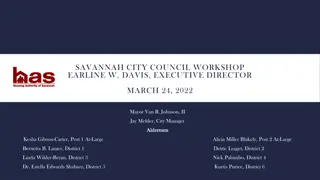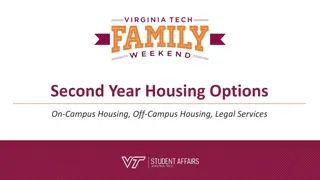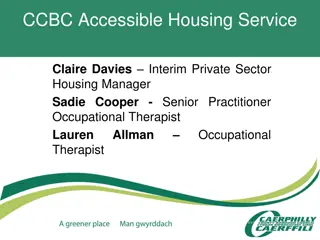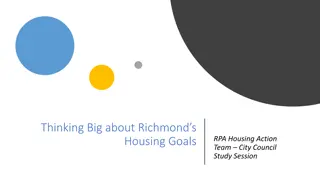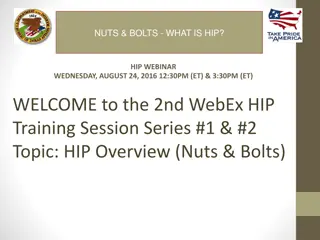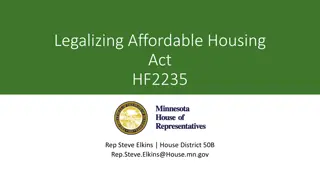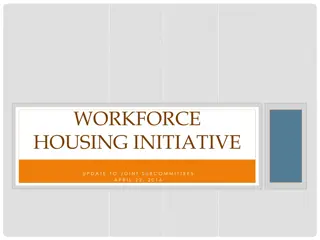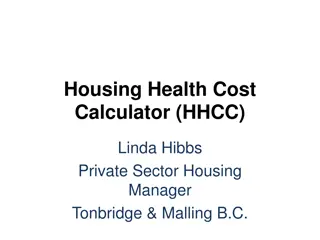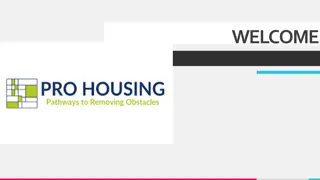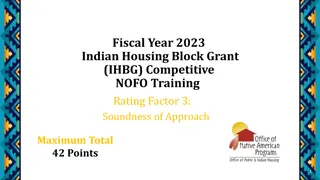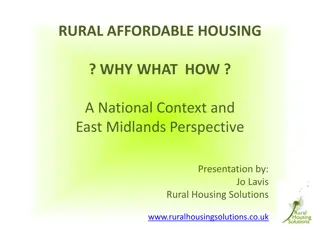Housing for Health Partnership: Community Meetings Update
Updates on Housing for Health Partnership community meetings include discussions on local action plans, state block grants for homelessness, funding overview, and support programs for individuals experiencing homelessness. The presentation highlights strategies to address housing needs effectively.
Download Presentation

Please find below an Image/Link to download the presentation.
The content on the website is provided AS IS for your information and personal use only. It may not be sold, licensed, or shared on other websites without obtaining consent from the author.If you encounter any issues during the download, it is possible that the publisher has removed the file from their server.
You are allowed to download the files provided on this website for personal or commercial use, subject to the condition that they are used lawfully. All files are the property of their respective owners.
The content on the website is provided AS IS for your information and personal use only. It may not be sold, licensed, or shared on other websites without obtaining consent from the author.
E N D
Presentation Transcript
January 31, 2024 February 6, 2024 February 7, 2024 Housing for Health Partnership: Housing for Health Partnership: Community Meetings - Action Plan Updates
Agenda Welcome Updating Action Plans + Background (15-20 minutes) Community Input Process (1.5 hours) Wrap-Up/Summary (5-10 min.) Welcome and Welcome and Agenda Agenda
State Block Grants To Address Homelessness: Santa Cruz County and CoC $12,000,000.00 $10,000,000.00 $8,000,000.00 $6,000,000.00 $4,000,000.00 $2,000,000.00 $- CESH/HEAP HHAP-1 HHAP-2 HHAP-3 HHAP-4 HHAP-5 2018 2019 2020 2021 2022 2023
Funding Overview: Average Costs Outreach team serving 100 people at a time 100 emergency shelter beds year-round 100 permanent supportive housing slots 100 rapid rehousing $3.2 Million (time-limited) PER YEAR $3.2 Million (ongoing) PER YEAR $3.65 Million PER YEAR $720,000 PER YEAR Housing for Health Budget = $21.7M in FY 23-24; Current Framework needs $78M/year to implement
For individuals enrolled in Medi-Cal (Medicaid) Undocumented individuals eligible for Medi-Cal January 2024 Enhanced Care Management ($625PMPM) adults experiencing homelessness with at least one complex physical, behavioral, or developmental need or children/families experiencing unstable housing/homelessness Housing Community Supports ($386 or $444PMPM) + Security Deposits ($5,000 one-time) Medi-Cal members experiencing/at-risk of homelessness Paid for outreach and connection; per-member, per- month; can do ECM and Housing together with one team CalAIM CalAIM (California (California Advancing and Advancing and Innovating Medi Innovating Medi- - Cal) Cal)
Native Americans, Black/African Americans - overly represented among people experiencing homelessness Hispanic/Latino/a/x 2023 count first time overly represented; significant disparities with families with children<18 Racial and Ethnic Disparities How to Address Them? Hispanic/Latino/a/x less likely to access coordinated entry and shelter Hispanic/Latino/a/x more likely to exit programs to permanent housing Whites, non-Hispanic more likely to get into PSH, more likely to exit back to homelessness
5 Musical tables 15 minutes per session - assigned one table to start 4 Transition/Breaks 5 minutes 1 Small $ and Big Impact ideas wall Community Input Process Bingo Card get sign-off from facilitator at each table for gift at end of meeting if visit all tables Not required to visit all tables, spend more time at some if desired 10 dots/person to express support for a proposed action
No idea is a bad idea Briefly express your idea (3-7 words as an action step written on paper); brainstorm for your self first (notes on your bingo card) Give everyone at table a chance to contribute Review prior group ideas to avoid duplicates when possible; put your dot on ideas you really support (only 10 dots/person) Limited new dollars available - think of ideas that can generate more resources or make existing resources more impactful Remember sub-populations in your ideas (veterans, youth, families, seniors and people with disabilities, working-age adults, those fleeing domestic violence, etc.) Racial/ethnic disparities how to address them Community Community Input Input - - Guidelines Guidelines
Community Input Community Input - - Stations Stations Table 1 Improving access (connections), outreach, response to unsheltered Table 2 Keep housing and avoid homelessness (prevention) Table 3 Help more people secure temporary shelter and permanent homes more quickly (housing pathways) Table 4 Reducing exits into homelessness from institutions criminal justice, health, foster care Table 5 Increasing incomes public benefits, education, and employment Small cost and big impact ideas not already shared (poster) Improving and coordinating services for youth at-risk of or experiencing homelessness (special table/poster)
